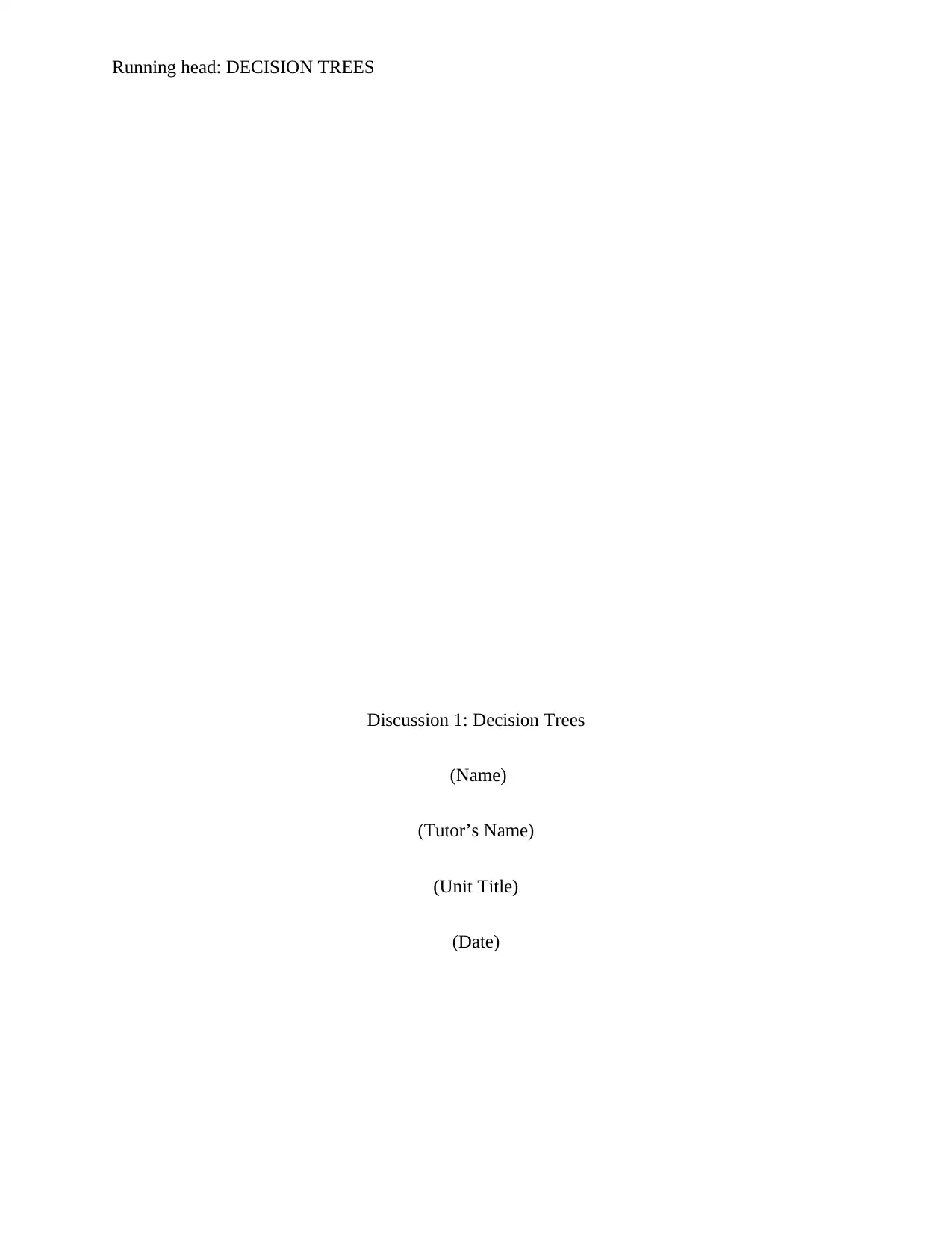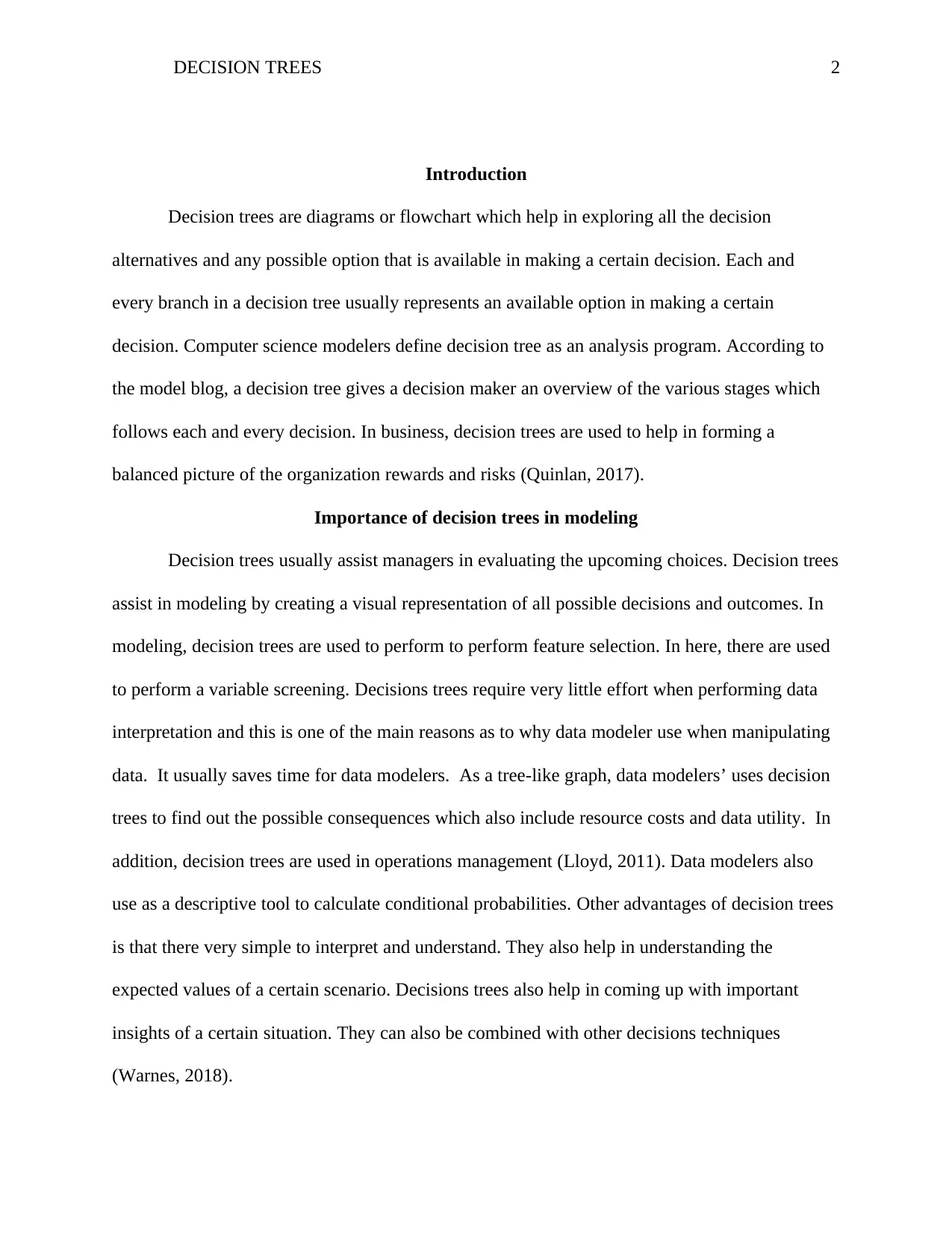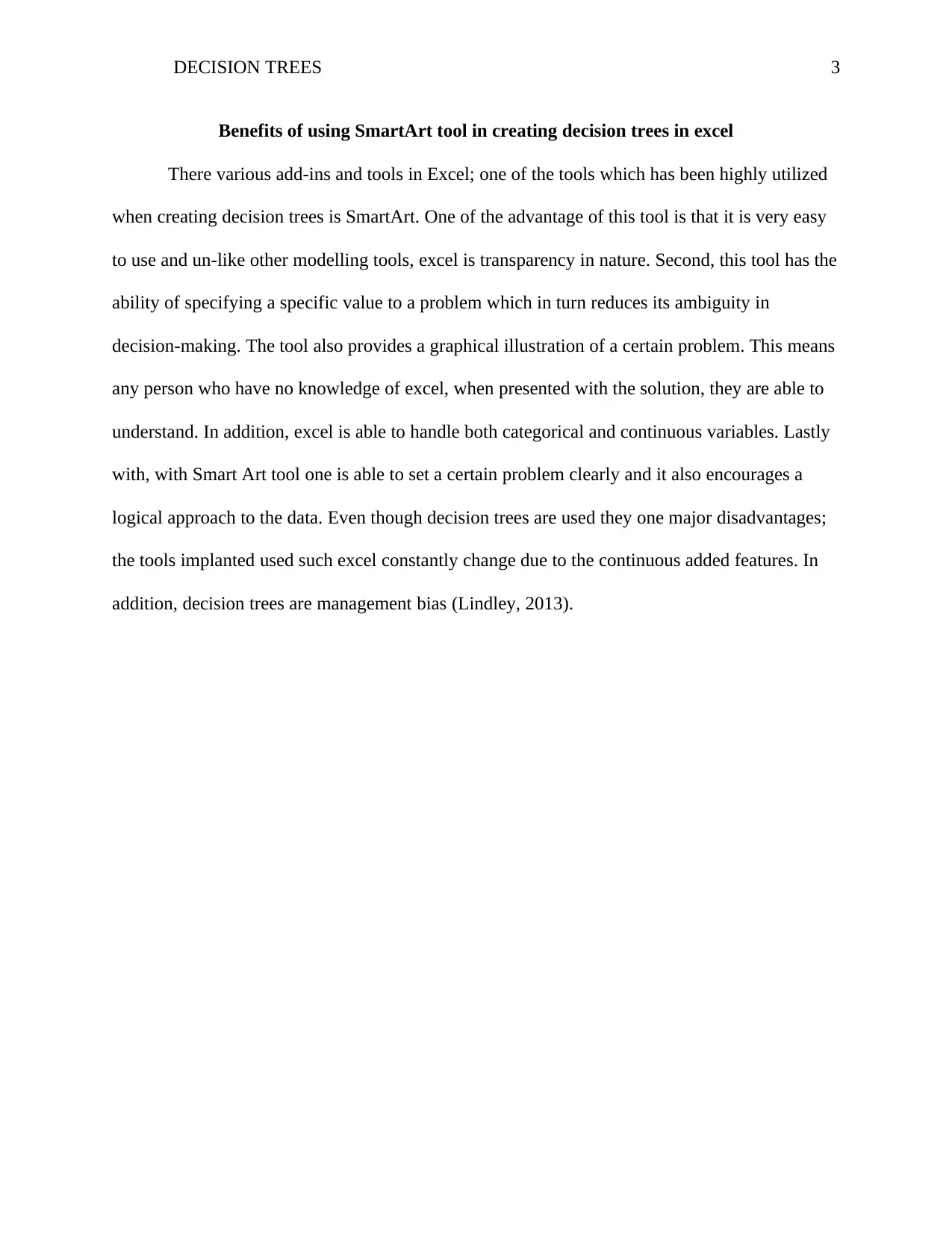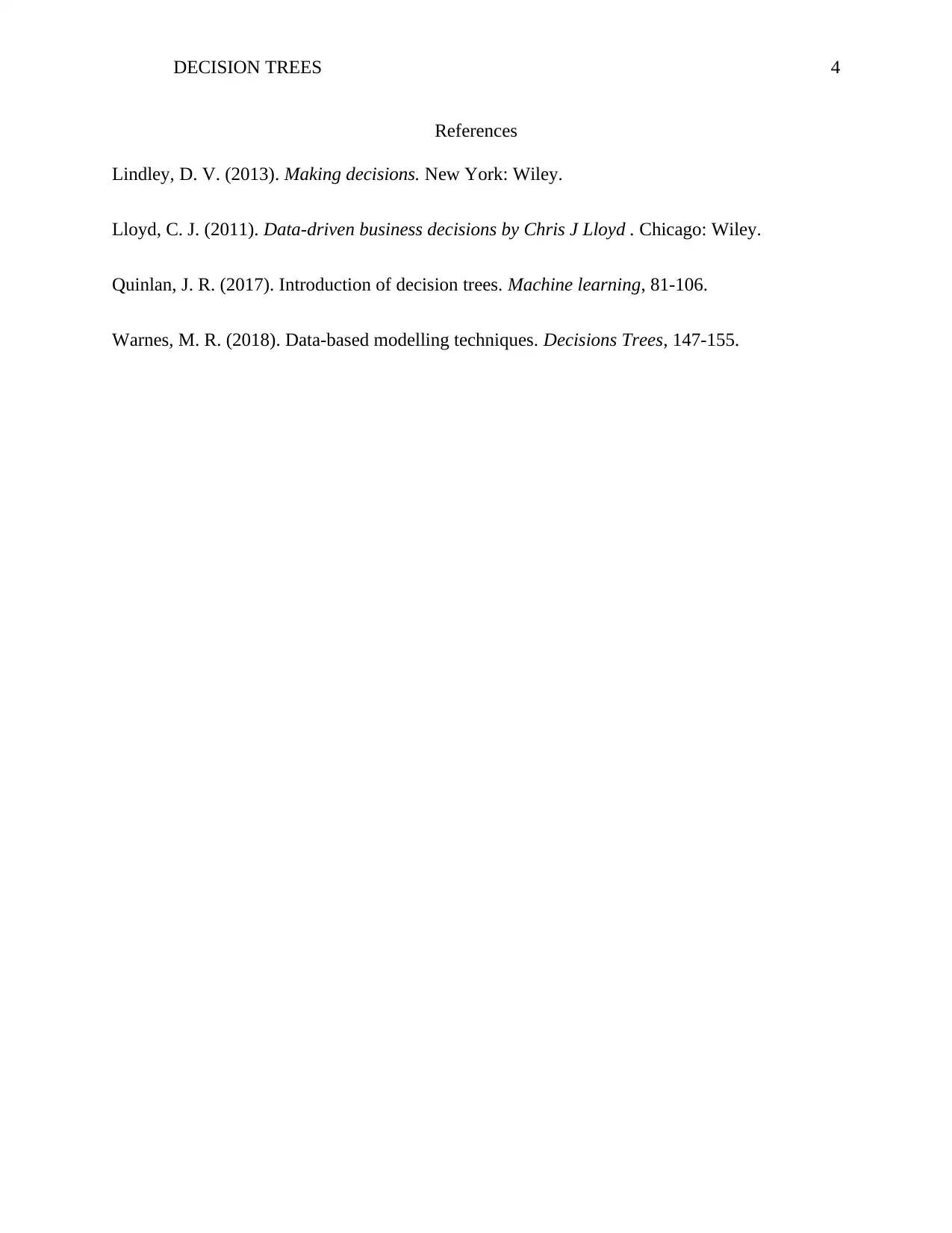Decision Trees: Exploring Modeling, Benefits, and SmartArt Tool Use
VerifiedAdded on 2023/06/03
|4
|629
|232
Essay
AI Summary
This essay discusses the use of decision trees as diagrams or flowcharts that aid in exploring decision alternatives and available options. It highlights the importance of decision trees in modeling, particularly in creating visual representations of decisions and outcomes, feature selection, and data interpretation. The essay also explores the benefits of using the SmartArt tool in Excel for creating decision trees, emphasizing its ease of use, ability to specify values, graphical illustration capabilities, and handling of categorical and continuous variables. Despite the advantages, the essay acknowledges the disadvantages of decision trees, such as the constant changes in Excel features and the potential for management bias. The document concludes by referencing relevant academic literature supporting the arguments presented.
1 out of 4











![[object Object]](/_next/static/media/star-bottom.7253800d.svg)